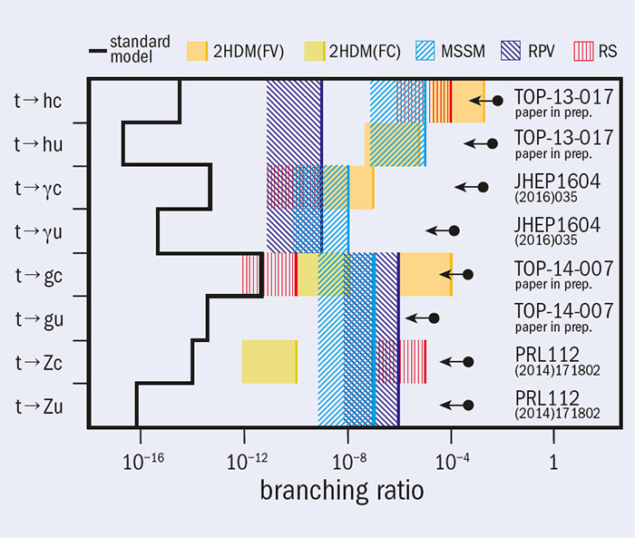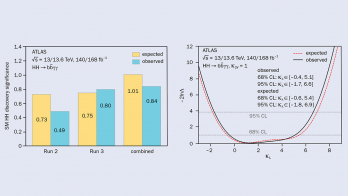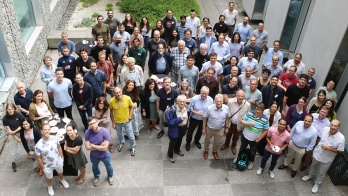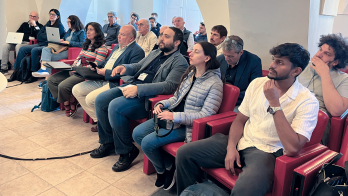
Twenty years after its discovery at the Tevatron collider at Fermilab, interest in studying the top quark at the LHC is higher than ever. This was illustrated by the plethora of new results presented by the CMS collaboration at the ICHEP conference in August and at TOP 2016, which took place in the Czech Republic from 19 to 23 September.
The top quark is the only fermion heavier than the W boson and which has weak decays that do not involve a virtual particle. This leads to an unusually short lifetime (5 × 10–24 s) for a weak-mediated process, and provides a unique opportunity to probe the properties and couplings of a bare quark. In particular, the width of the top quark (which, like for all quantum resonances, is inversely proportional to its lifetime) may be easily affected by new-physics processes.
In a series of recent publications, the CMS collaboration has explored the width of the top quark in a model-independent way and searched for contributions from extremely rare processes mediated by so-called flavour-changing neutral currents (FCNCs).
The top-quark width is too narrow compared with the experimental resolution of the CMS detector to allow a precision measurement directly from the shape of the top’s invariant-mass distribution. CMS therefore considers alternative observables that provide complementary information on the top’s mass and width.
One of those observables is the invariant-mass distribution of lepton and b-jet systems produced after top-quark pair decays, which has allowed the collaboration to place new bounds on a Standard Model-like top-quark width of 0.6 ≤ Γt ≤ 2.4 GeV, based on the first 13 fb–1 of data collected in 2016 at a collision energy of 13 TeV. In parallel, based on the LHC Run 1 data set recorded at lower energies, a set of dedicated searches for FCNC processes involving top quarks has been carried out. This analysis focuses on the couplings of the top-quark to other up-type quarks (up, charm) and different neutral bosons: the gluon, the photon, the Z boson and the Higgs boson.
CMS collaboration is fast approaching sensitivity to the FCNC signals expected by some models with just Run 1 data.
Another approach adopted by CMS was to search for the rare production of a single top quark in association with a photon and a Z boson with the 8 TeV data set. These channels exploit the large up-quark density in the proton, and to a lesser extent the charm-quark density, therefore compensating for the smallness of the FCNC couplings. Finally, events with the conventional signature of t-channel production (resulting in a single top-quark decay and a light-quark jet) were used to set constraints on FCNC and other anomalous couplings by simultaneously considering their effects on the production and the decay of the top quark with both the 7 and 8 TeV data sets.
Although no deviation from the background-only expectations has been observed in any of the analyses so far, the CMS collaboration is fast approaching sensitivity to the FCNC signals expected by some models with just Run 1 data (see figure). All the analyses are limited in statistics and therefore will only benefit from more data to start effectively probing beyond-the-Standard-Model effects in the top quark sector.







